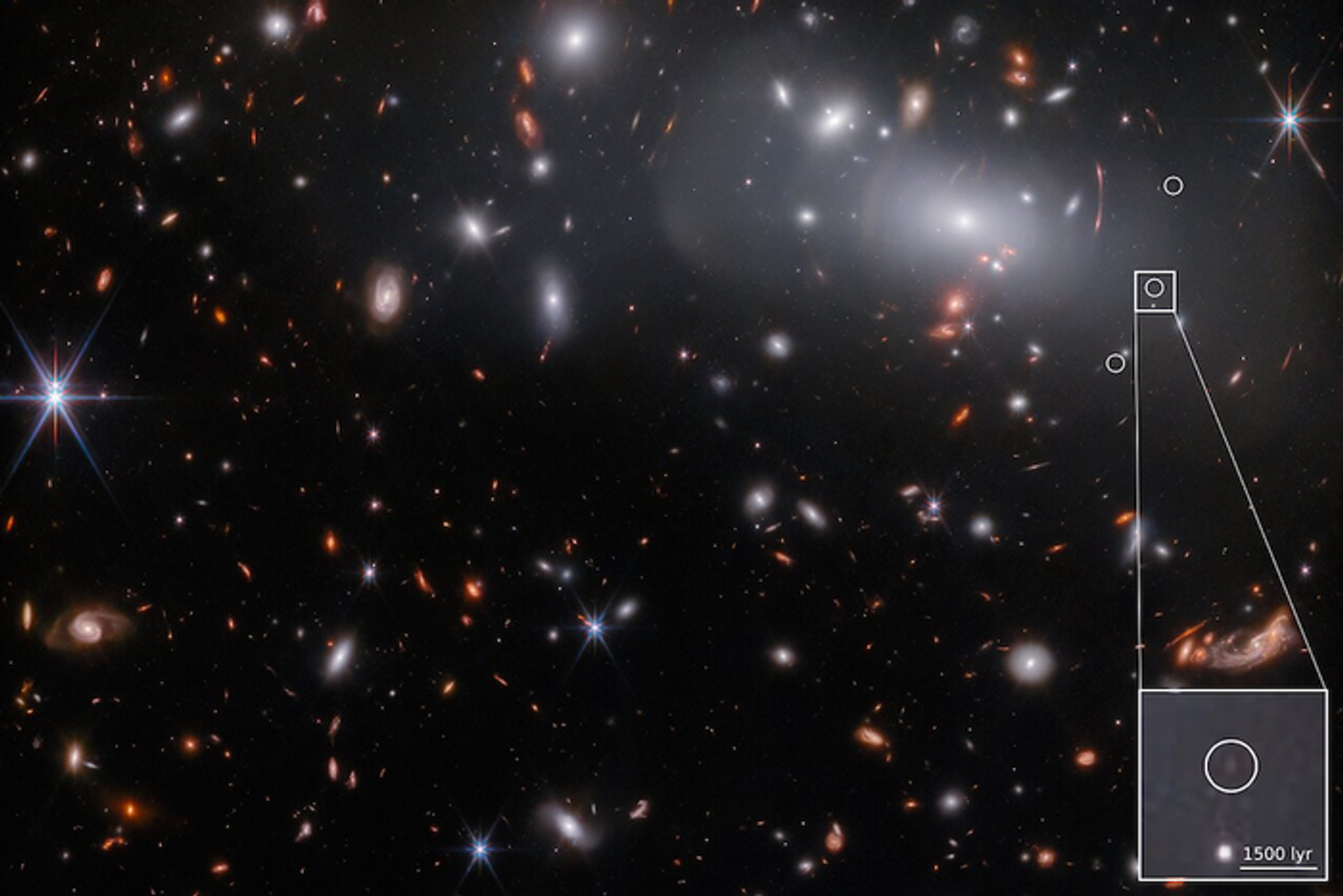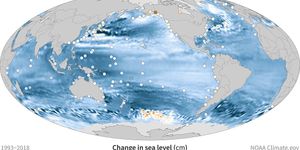Tiny Galaxy in Early Universe Observed to Rapidly Create New Stars
NASA’s James Webb Space Telescope (JWST) recently observed a tiny galaxy that existed approximately 500 million years after the Big Bang, or more than 13 billion years ago, whose discovery was recently published in Science. While the distance from Earth is astounding, the astronomers also discovered this tiny galaxy was producing new stars at an alarmingly high rate given its small size.
This study holds the potential to not only continue to observe the universe so far back in time, but to also help scientists better understand galaxies that existed so soon after the Big Bang.
Image of a tiny, but very active, galaxy that was observed to exist approximately 500 million years after the Big Bang. (Credit: ESA/Webb, NASA & CSA, P. Kelly)
“This galaxy is far beyond the reach of all telescopes except the James Webb, and these first-of-their-kind observations of the distant galaxy are spectacular,” said Dr. Patrick Kelly, who is an assistant professor in the University of Minnesota School of Physics and Astronomy, and a co-author on the study. “Here, we’re able to see most of the way back to the Big Bang, and we've never looked at galaxies when the universe was this young in this level of detail. The galaxy’s volume is roughly a millionth of the Milky Way’s, but we can see that it’s still forming the same numbers of stars each year.”
Using a combination of gravitational lensing and spectroscopy, the researchers were able to determine the galaxy's age and size at approximately 13 billion years old and having a radius of approximately 16.2 parsecs, or 52.8 light-years. For context, our Milky Way has a radius of approximately 16,200 parsecs, or 52,800 light-years. Therefore, this newly-observed galaxy from the earliest parts of the universe is approximately 0.1 percent the size of the Milky Way.
Hayley Williams, who is a PhD student at the Minnesota Institute for Astrophysics and lead author of the study, said there’s a significant difference between present-day galaxies and those that existed in the early universe and this study’s findings could help scientists better understand the formation, evolution, and characterization of early galaxies in the universe.
The researchers were quick to point out how the large light-gathering power of JWST open new doors for new data given JWST’s extremely large light-gathering abilities, which are approximately 10 times as much as NASA’s Hubble Space Telescope.
“The James Webb Space Telescope has this amazing capability to see extremely far into the universe,” said Williams. “This is one of the most exciting things about this paper. We're seeing things that previous telescopes would have ever been able to capture. It’s basically getting a snapshot of our universe in the first 500 million years of its life.”
What new discoveries will James Webb make about the early universe in the coming years and decades? Only time will tell, and this is why we science!
Sources: Science, University of Minnesota
As always, keep doing science & keep looking up!









